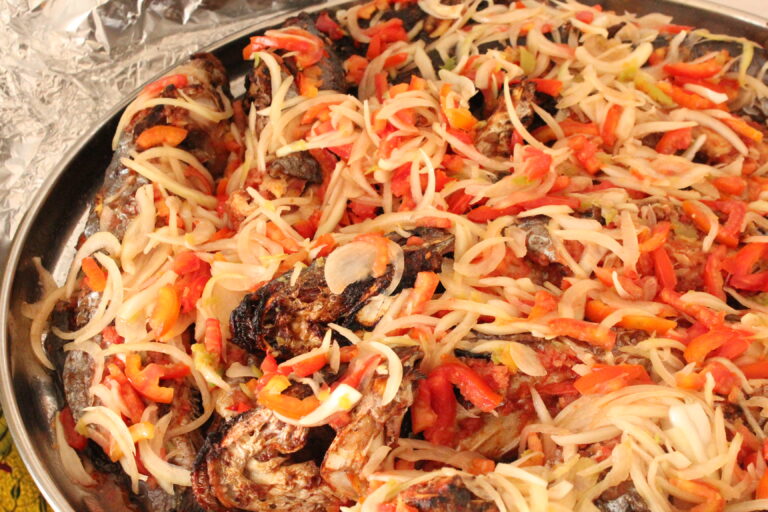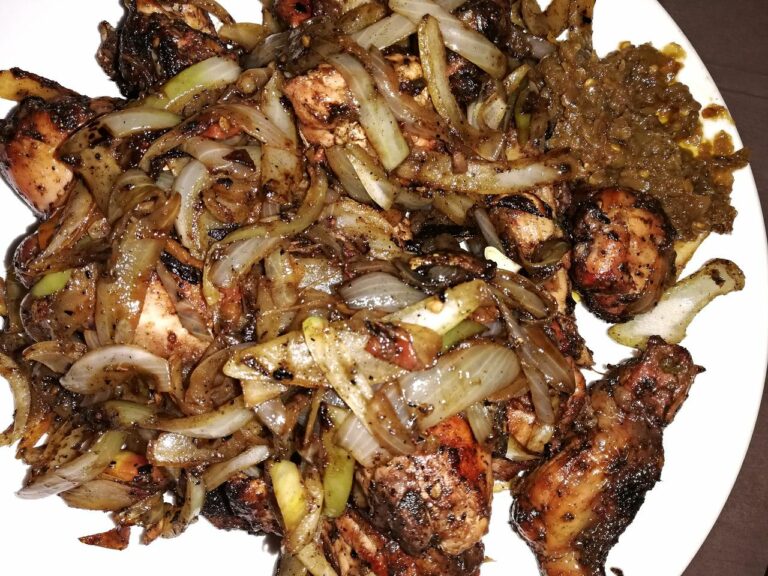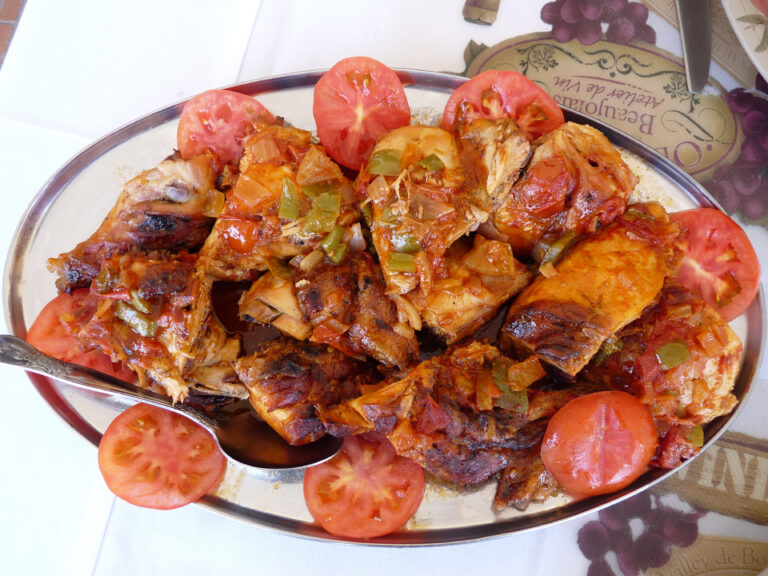Introduction to Kedjenou
Kedjenou is a traditional Ivorian dish that is popular among the Baoulé people in the central region of the country. The word Kedjenou means “to shake” in Baoulé language, which refers to the way the dish is cooked. The dish is known for its rich flavor, tenderness, and juicy texture. It is usually served with rice or fufu, a starchy food made from cassava, yam, or plantain.
Ingredients of Kedjenou
The main ingredients of Kedjenou are chicken or guinea fowl, onions, tomatoes, peppers, garlic, ginger, and oil. Some recipes may also include carrots, eggplant, or potatoes. The vegetables are chopped into small pieces and mixed with the spices to make a marinade. The poultry is then marinated in the mixture for a few hours to overnight, depending on the recipe. The marinade is the key to the flavor of the dish, as it infuses the meat with all the aromatic and savory flavors of the spices.
Selection of Poultry for Kedjenou
To make a good Kedjenou, it is important to choose the right poultry. Chicken or guinea fowl is the most commonly used meat for Kedjenou. The meat should be fresh and preferably free-range, as it tends to be more flavorful and tender. The size of the poultry also matters, as larger birds may require longer cooking time. Some recipes recommend using bone-in meat for added flavor, while others use boneless meat for convenience.
Preparation of Poultry for Kedjenou
Before marinating the poultry, it should be cleaned and cut into pieces. The pieces should be small enough to fit in a pot or a fireproof dish. The skin should be left on to keep the meat moist and flavorful. Some recipes recommend browning the meat first, while others skip this step. The marinade should be prepared separately by mixing the chopped vegetables, spices, and oil in a bowl. Once the marinade is ready, the poultry pieces should be coated with the mixture and left to marinate in a cool place for at least 2 hours.
Cooking Kedjenou in a Pot
To cook Kedjenou in a pot, a heavy-bottomed pot with a tight-fitting lid is needed. The marinated poultry pieces are placed in the pot, along with any leftover marinade. The pot is then sealed tightly with a lid and placed on low heat. No water is added, as the marinade and the moisture from the meat are enough to create a steamy environment for cooking. The pot is shaken periodically to prevent sticking and to distribute the juices evenly. The cooking time varies depending on the size of the poultry pieces, but it usually takes around 1 to 2 hours.
Cooking Kedjenou over a Fire
Cooking Kedjenou over a fire is a traditional way of making the dish. A fireproof dish, such as a clay pot or a cast-iron pot, is used to cook the marinated poultry pieces over an open fire. The dish is covered with a tight-fitting lid or a banana leaf to keep the steam in. The pot is then placed directly on the glowing embers or on a tripod over the fire. The cooking time is similar to cooking in a pot, but it may require more attention to prevent burning or uneven cooking.
How to Serve Kedjenou
Kedjenou is usually served with rice or fufu. The dish can be spooned directly onto the plate or served family-style in a communal dish. Some people like to top their Kedjenou with fresh herbs, such as parsley or cilantro, for added freshness. Kedjenou is a hearty and satisfying meal that is perfect for sharing with family and friends.
Variations of Kedjenou
There are many variations of Kedjenou, depending on the region and the cook. Some recipes use different spices, such as thyme or curry powder, to give the dish a unique twist. Others may use different meats, such as goat or fish, to make a different version of the dish. Some recipes may also include vegetables that are not commonly used in Kedjenou, such as okra or cabbage. Regardless of the variation, Kedjenou is a versatile and delicious dish that is sure to satisfy any appetite.



